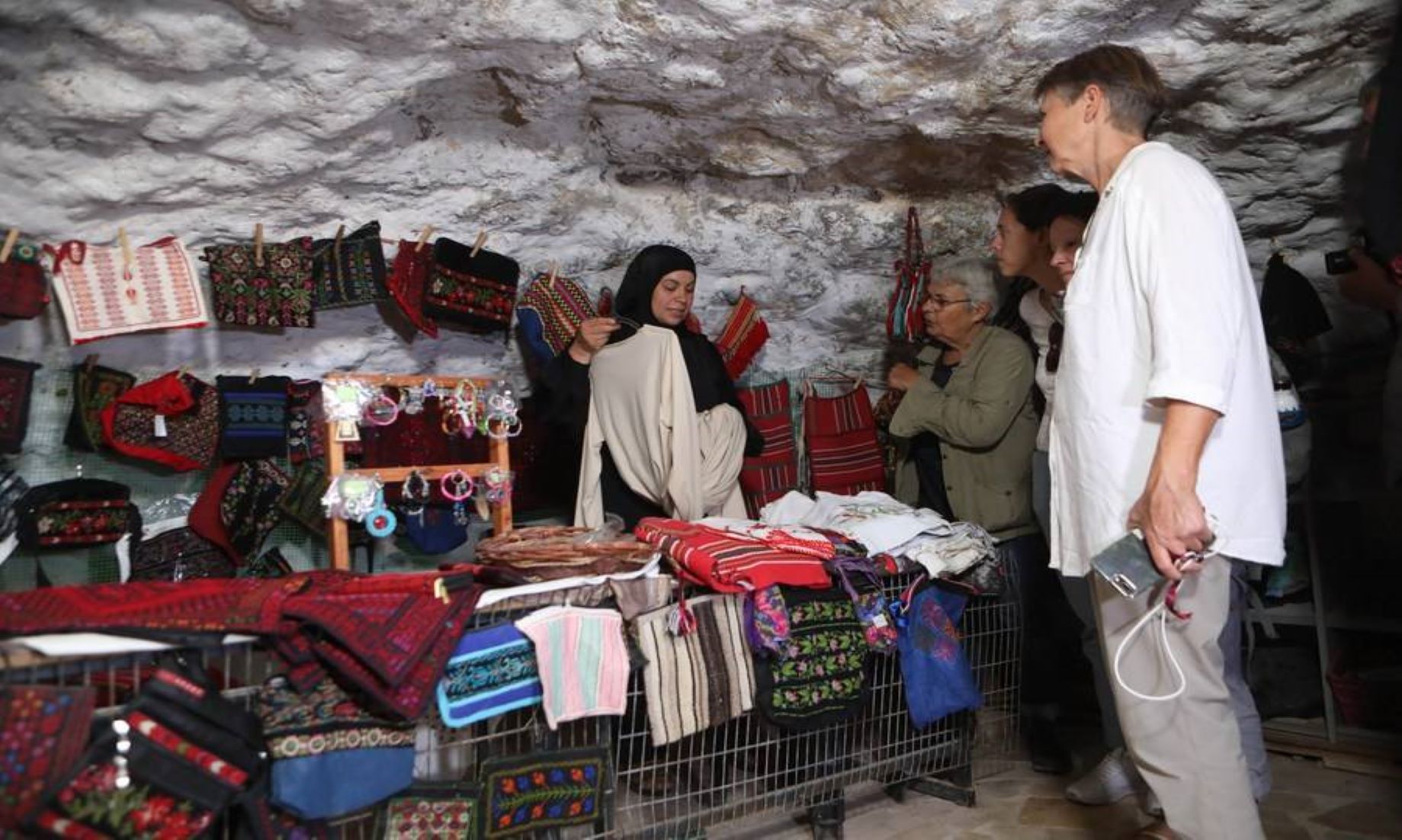RAMALLAH, Nov 21 (NNN-WAFA) – A Byzantine-era archaeological cave in Khirbet Susiya, south of the West Bank city of Hebron, has become an iconic place, reflecting the Palestinian struggle against Israeli demolition threats.
Fatma al-Nawajaa, a local resident of Susiya village, said, “In a bid to protect the archaeological cave and keep our humanitarian issue alive, I came up with an idea to restore the cave and turn it into a workshop, to exhibit our homemade traditional products.”
Embroideries, artistic handicrafts, traditional food made from goat’s milk, and cheese, as well as, clothes made of sheep’s wool are among the products displayed in the cave, dubbed “Susiya Exhibition for Palestinian handicrafts and embroideries.”
“In the beginning, we resorted to marketing our products to foreign tourists to tell them, through our own methods, about our crisis and how Israel insists on expelling us from our own lands,” she recalled.
Now, the cave became the main source of income for 30 women, to keep their families afloat, she said.
The town of Khirbet Susiya, which has dozens of caves that are used as homes for locals, is classified as Area C.
According to the Oslo Accords, signed between Israel and the Palestinians in 1993, the West Bank was divided into three areas, with Area A under full security and administrative control of the Palestinian Authority (PA), Area B under joined Israeli security control and PA administrative rule, while Area C comes under full Israeli control.
“Since then, the Israeli authorities imposed tough restrictions on us, and our area has been suffering from a lack of infrastructure and urbanisation, forcing dozens of the residents to work as shepherds only,” complained the 52-year-old mother of four.
“Because of this, many men decided to leave the town and look for other job opportunities in the West Bank, while we stayed with our children and decided to produce traditional products to make some money to lead a life,” she added.
“We protect our lands from the Israeli plans, to annex them to their settlements. This archaeological cave proves that we (Palestinians) are the owners of the land,” she stressed.
The unprecedented determination of Nawajaa and her peers, has attracted the Ta’ayush Arab-Jewish partnership movement, a “grassroot movement of Arabs and Jews, working to construct a true Arab-Jewish partnership,” said Gai Kotavia, an Israeli and Ta’ayush member.
“We organise daily and weekly visits to the territories of Area C, to protect locals and document all Israeli violence, to prevent them from cleaning the area from its real history,” the 50-year-old Israeli activist said.
“The archaeological caves are symbols for the Palestinians, struggling against the Israeli threats to clear the area from its owners,” he said, stressing that, “together we strive for a future of equality, justice, and peace, to end the Israeli occupation of the Palestinian territories and to achieve full civil equality for all.”– NNN-WAFA





